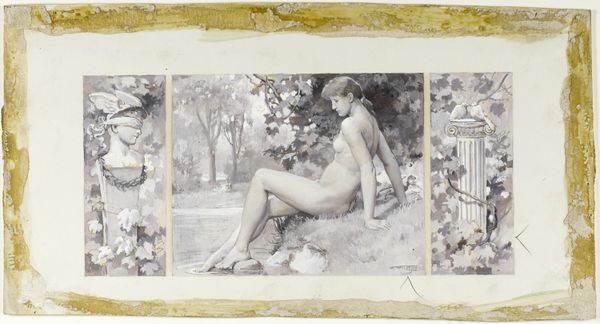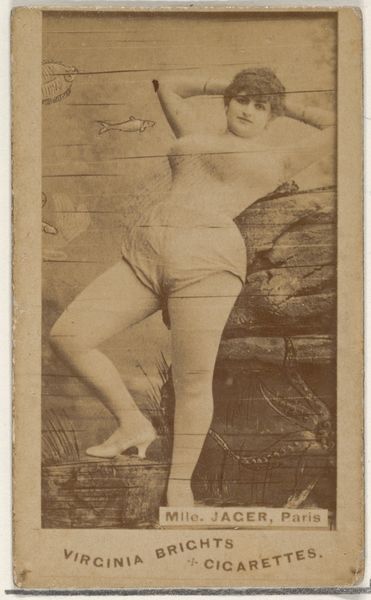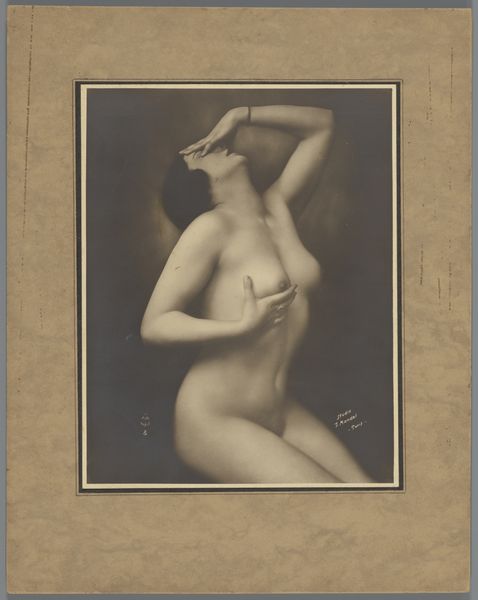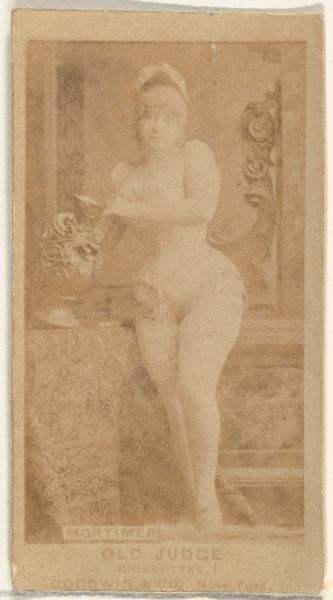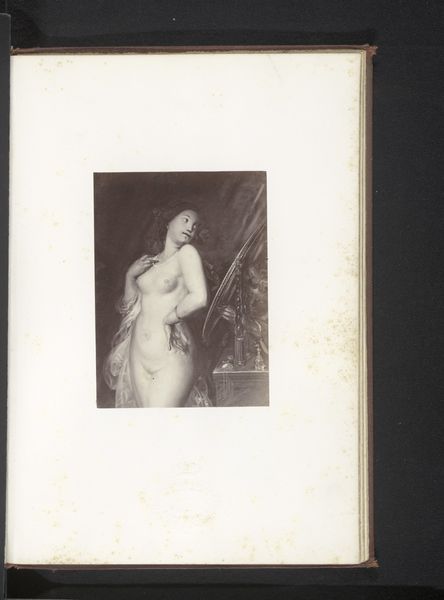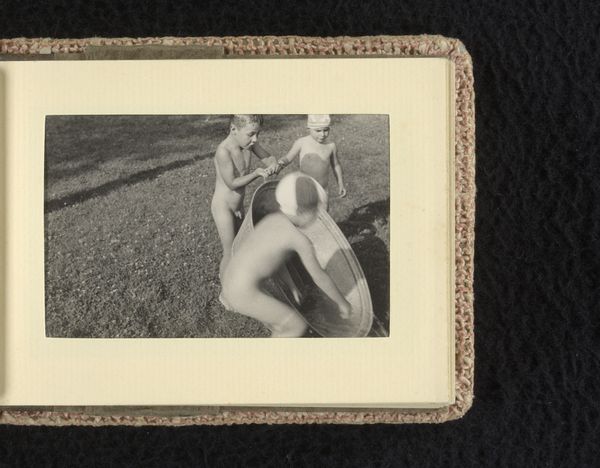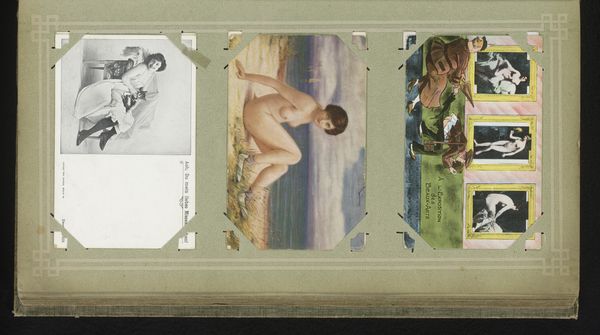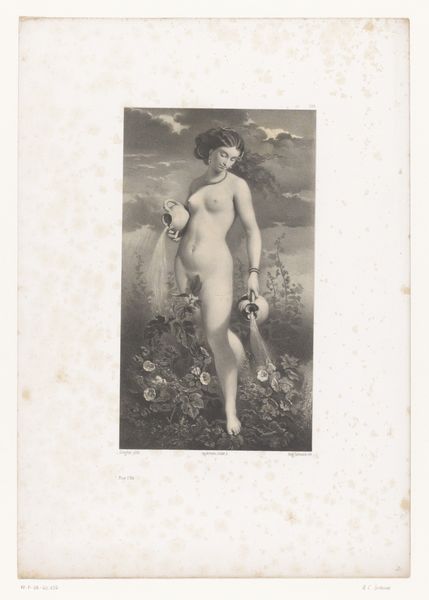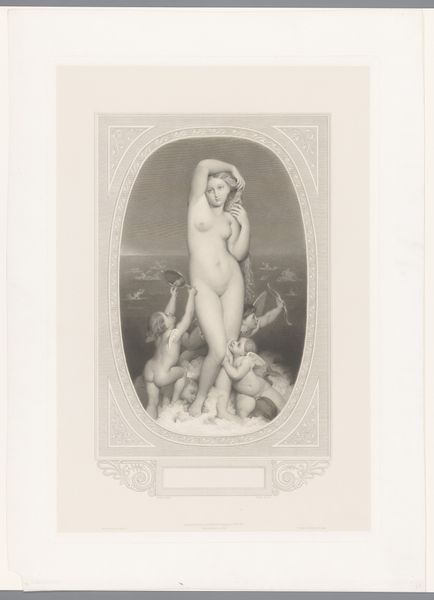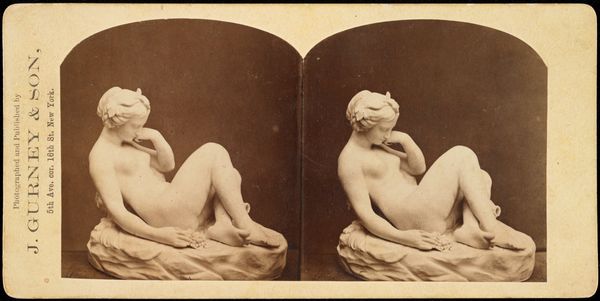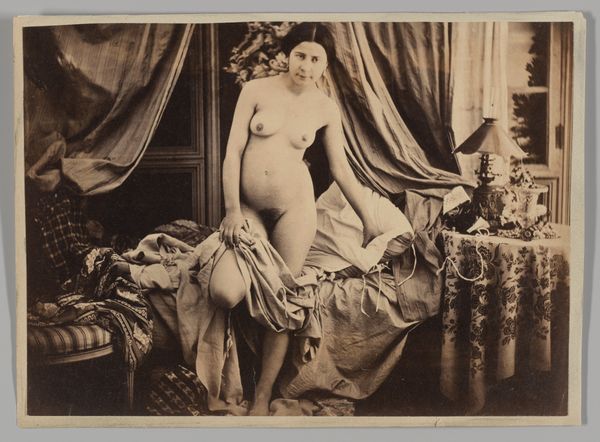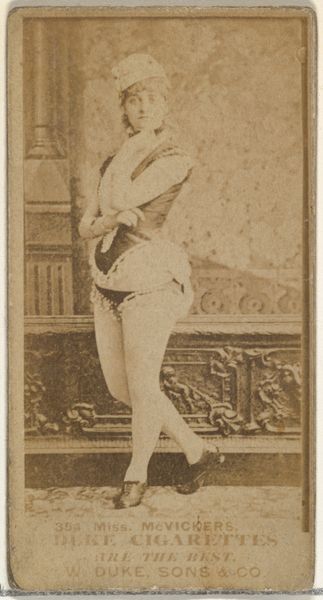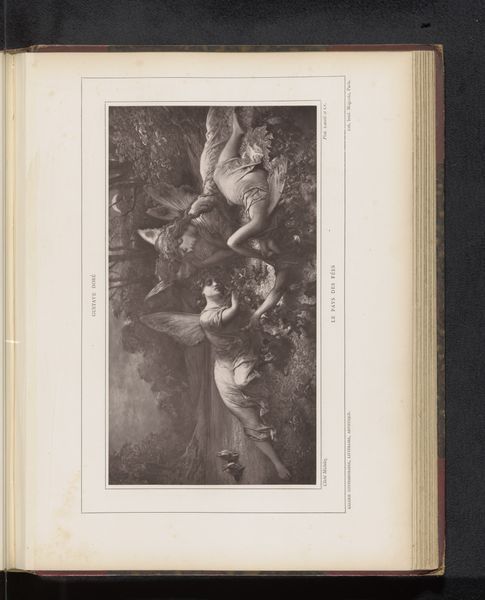
collage, print, photography
#
portrait
#
collage
# print
#
photography
#
nude
#
erotic-art
Dimensions: height 196 mm, width 368 mm
Copyright: Rijks Museum: Open Domain
Curator: At first glance, it strikes me as something between an old Hollywood screen test and a page torn from a particularly daring scrapbook. Editor: You’ve just stumbled upon "Drie portretten van een naakte vrouw voor een decor," a fascinating piece dating roughly between 1900 and 1930. It’s catalogued as a collage using photography and print techniques by the artist Léo. Curator: Collage is astute! It gives the piece an interesting tension—the staged artifice of early photography paired with that almost aggressive tactility of cut-and-paste. Do you think the repeated figure is meant to evoke the Holy Trinity? Editor: Intriguing. The repetition does lend itself to symbolic interpretation. Consider how triptychs in religious art often presented a narrative or different facets of a central figure. The choice of the nude form could also be seen through a prism of classical art where it represents beauty and truth, but the backdrop seems more suggestive of secular entertainment. Perhaps the intent was to subvert expectations and traditional moral frameworks. Curator: Subversion certainly resonates! There is a coquettishness that suggests both innocence and artifice, a subtle erotic charge within an otherwise demure setting. The contrasting backgrounds for each figure may suggest the woman inhabiting diverse and idealized roles. Editor: Yes, the formal arrangement generates that visual rhythm. The compositions share similar tonal values. The artist plays with mirroring—the positioning of each woman, though not identical, creates a strong horizontal axis. Perhaps the intention was to elevate popular media photography by subtly integrating these visual harmonies of academic art. Curator: So it would appear this piece asks us not merely to view, but also to contemplate the layers of meaning crafted within these collaged fragments, it has an unexpected resonance when considered outside the contemporary gaze. Editor: Precisely! It reminds us of the complexities inherent in art from bygone eras.
Comments
No comments
Be the first to comment and join the conversation on the ultimate creative platform.
